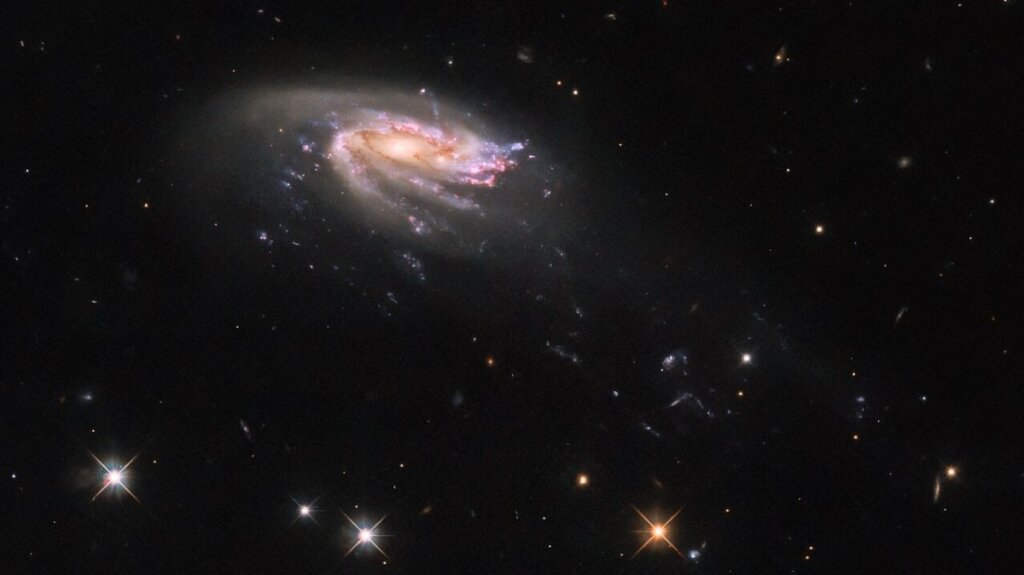
Hubble telescope reels in gorgeous, star-spawning cosmic jellyfish (photo) (Image Credit: Space.com)

The Hubble Space Telescope has reeled in a titanic cosmic jellyfish.
The celestial sea creature is actually the jellyfish galaxy JO206, which is located around 700 million light-years from Earth, fittingly in the constellation of Aquarius, the water bearer.
The Hubble image shows the main body of JO206 as a colorful disk surrounded by a hazy cloud of growing dust. Tendrils of material, much like the tendrils of the sea creature from which its name is derived, trail the galaxy.
Related: The best Hubble Space Telescope images of all time!
The jellyfish galaxy is seen afloat in an inky black sea punctuated by stars. The spiral galaxy is angled toward Earth and Hubble so that it is “face-on” in relation to our planet, allowing it to be seen in stunning detail.
Jellyfish galaxies like JO206 are found in galaxy clusters, and they are characterized by the distinctive trails of gas that are ripped from them as they force their way through material that lies between galaxies in these conglomerations, officially called the “intracluster medium.” This means there is much more to the anatomical features of JO206 than may initially meet the eye.
As the spiral galaxy JO206 swims through the superheated intracluster medium, gas is pulled from the faint cloud of material around the galaxy and forms numerous thin arms. This causes intense bouts of star formation called starbursts in the tendrils.
Studying these regions therefore offers astronomers the chance to observe star formation in extreme and violent conditions, away from the influence of the main disk of a galaxy.

Hubble observations have led to the surprising revelation that star formation in the trailing tendrils of JO206 is proceeding in mostly the same way as it does in the galaxy’s main body, mission team members said. This implies that, in jellyfish galaxies, star birth isn’t strongly influenced by the environment of newly born stars.
The image of JO206 is the sixth and last in an observing campaign by Hubble that has seen it reel in six jellyfish galaxies for astronomers to investigate over the past two years.





